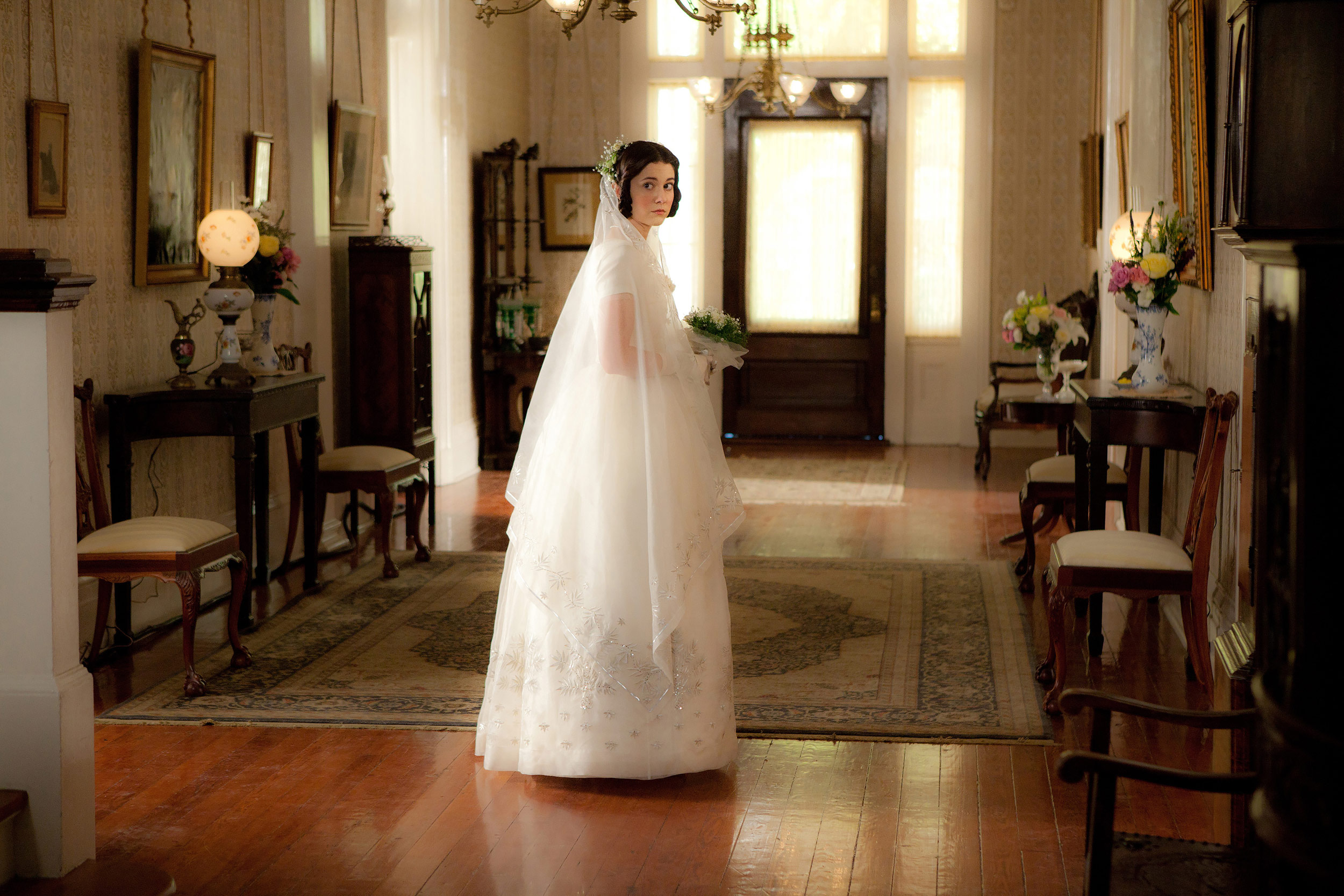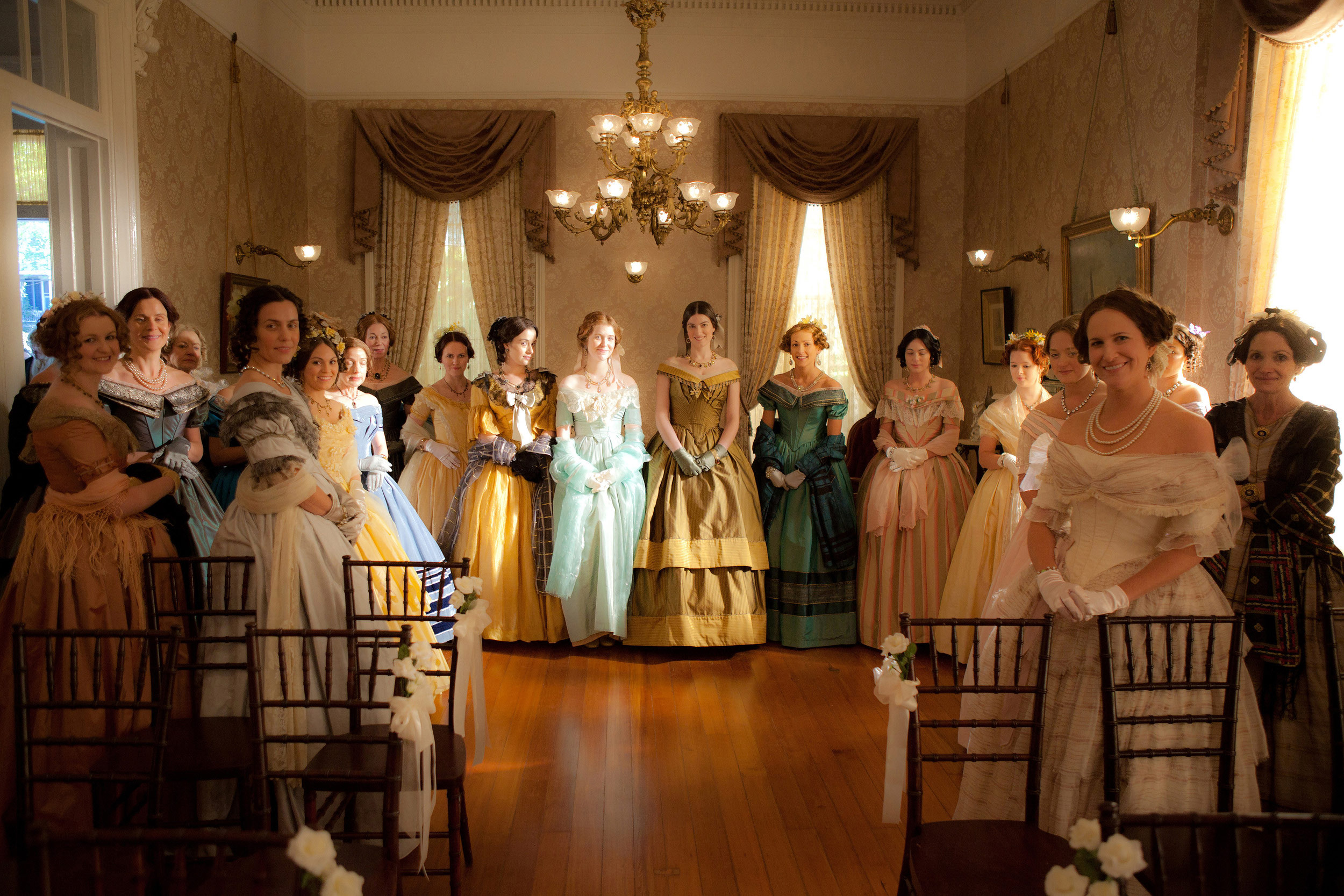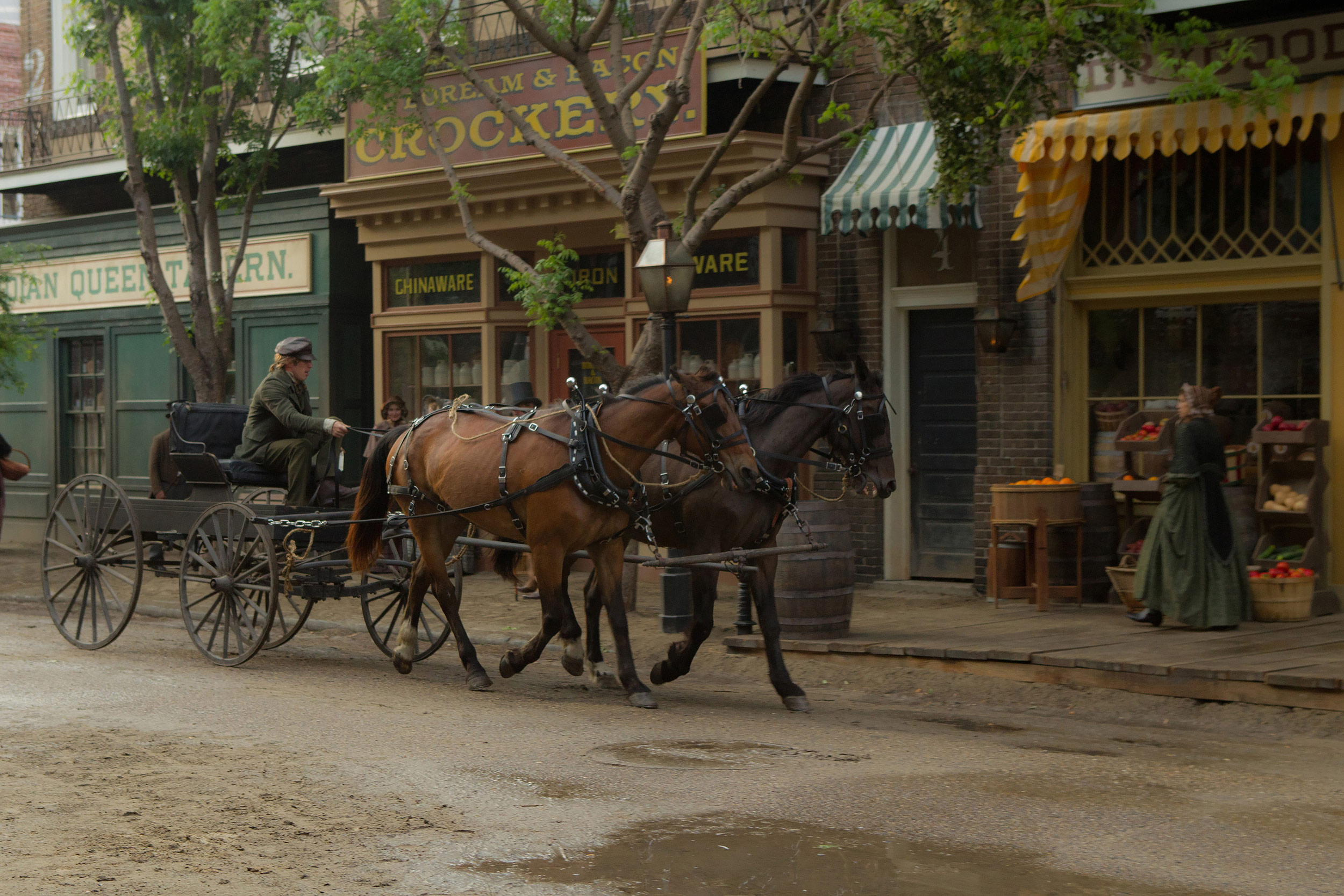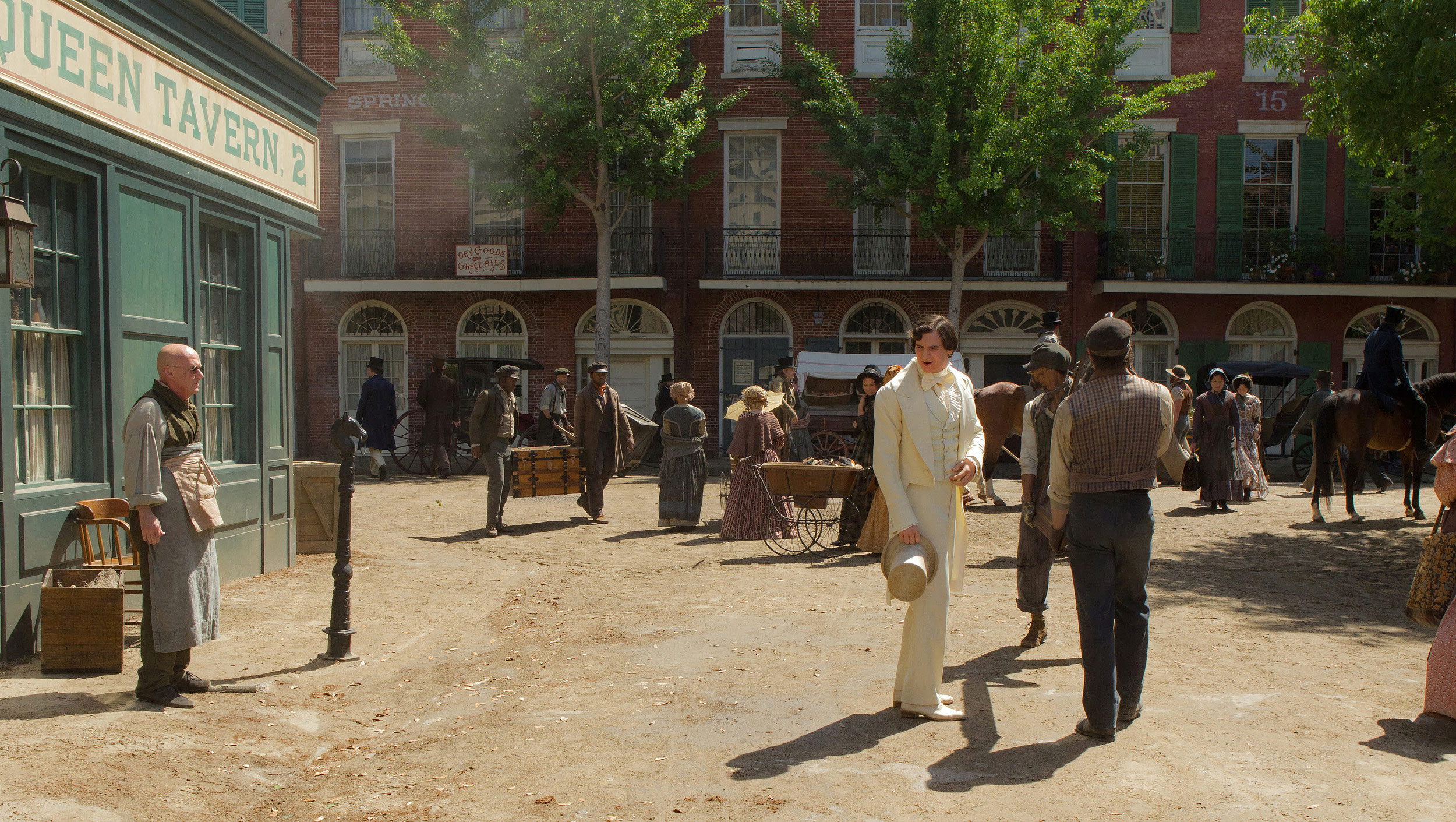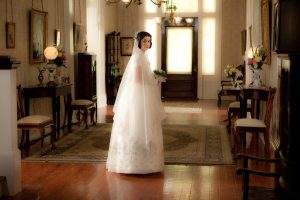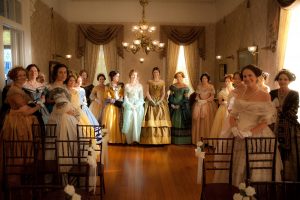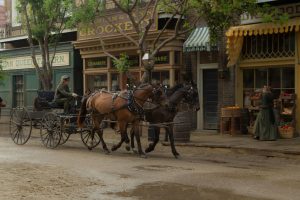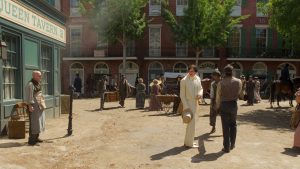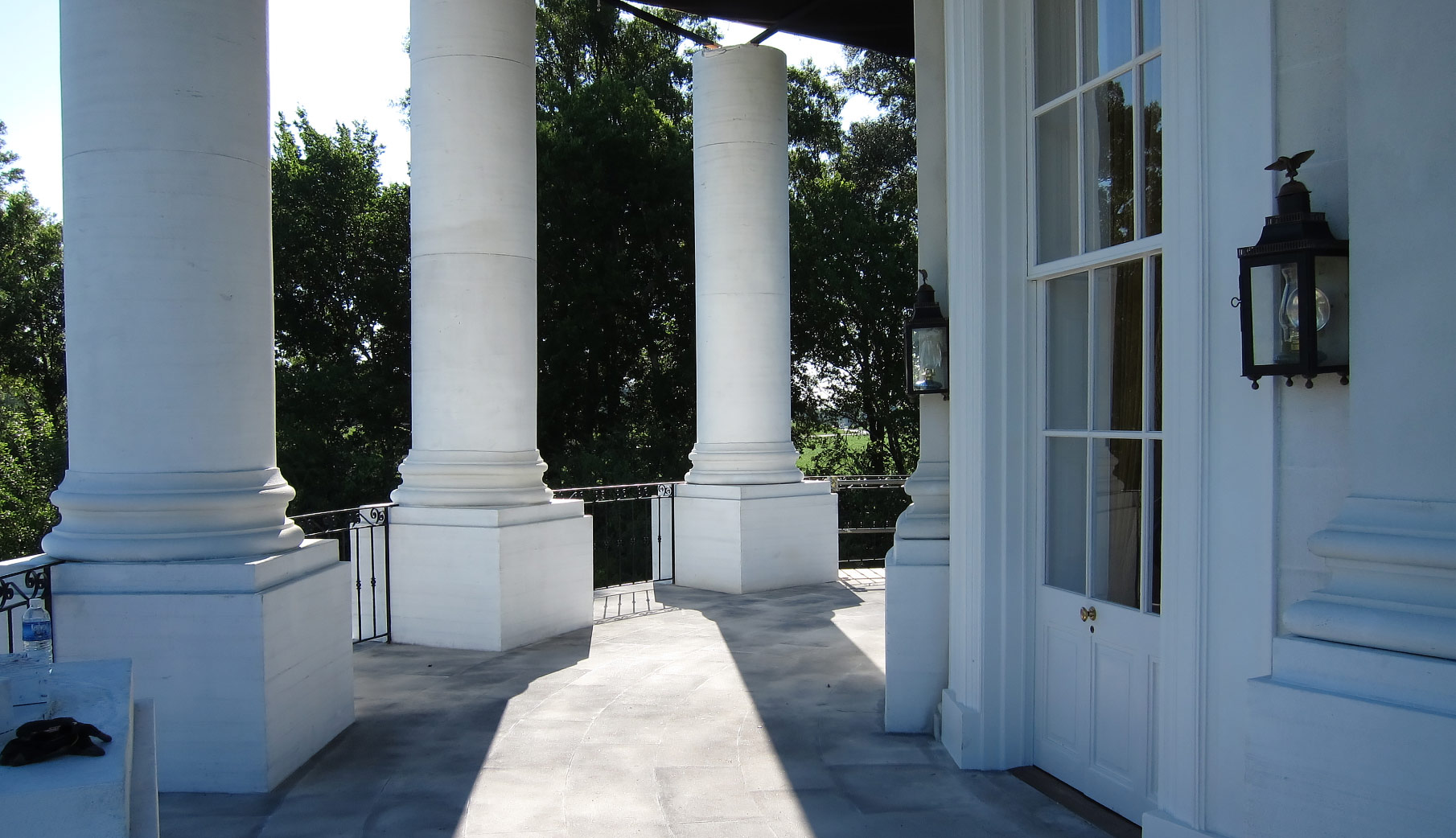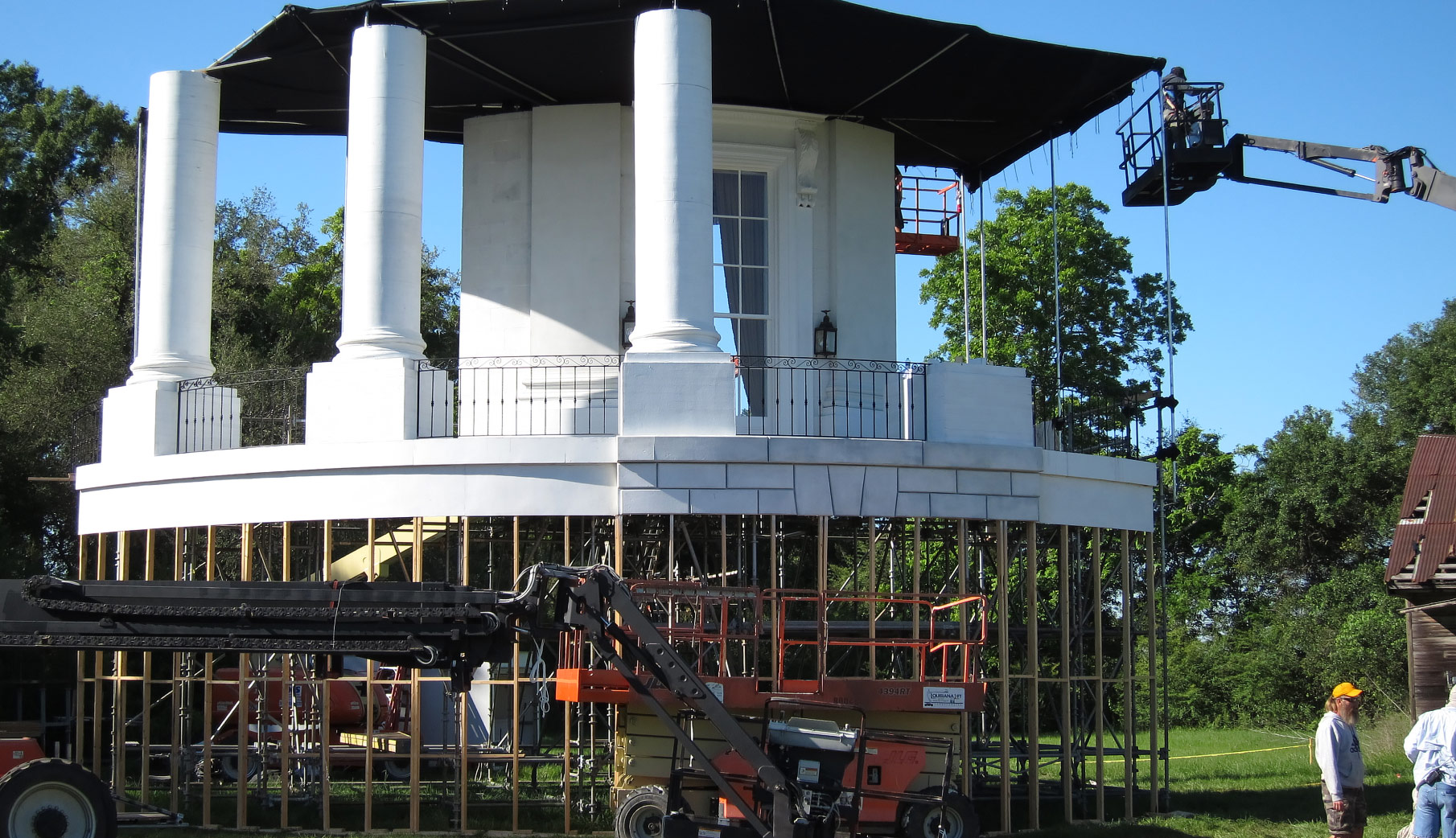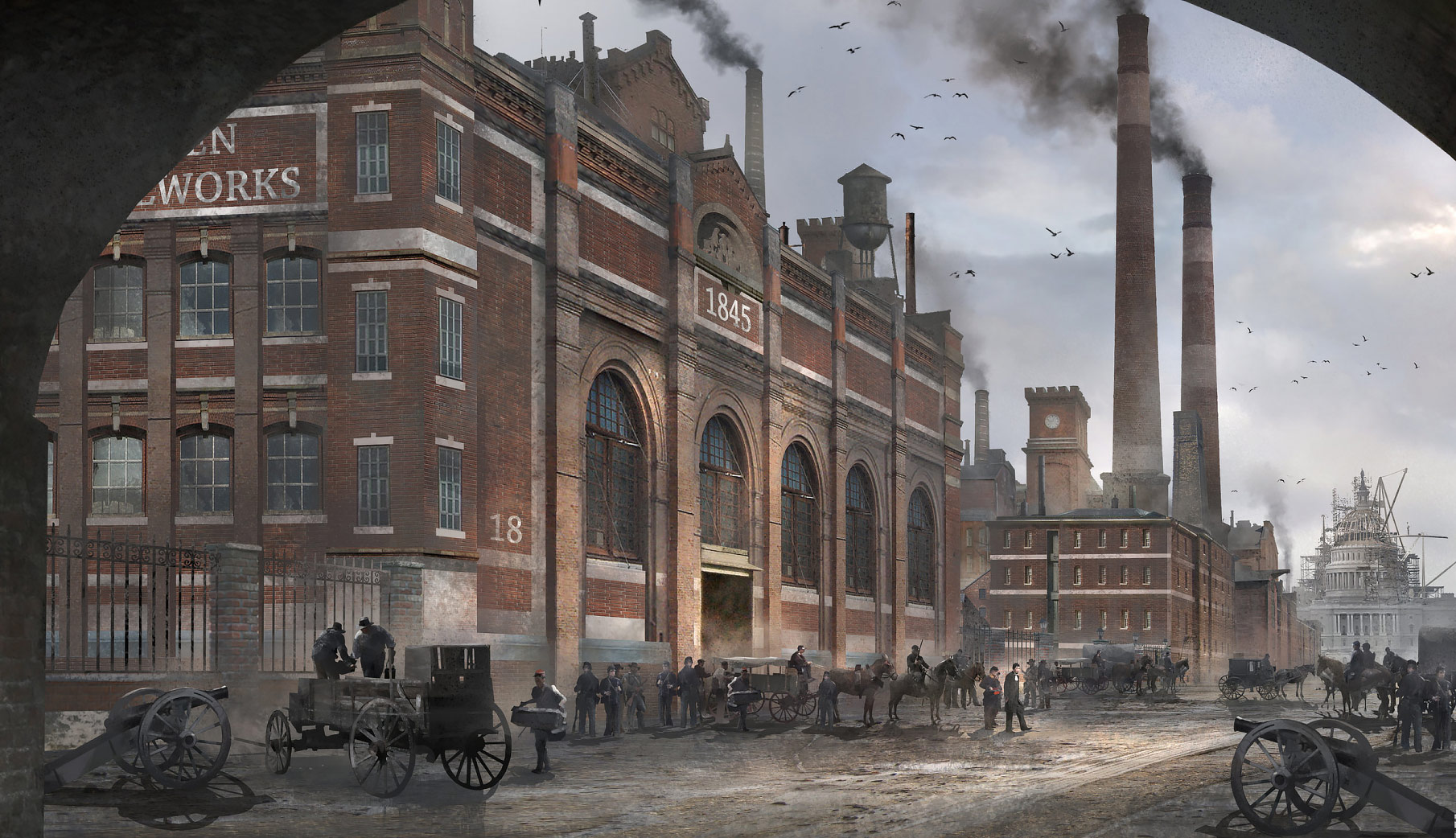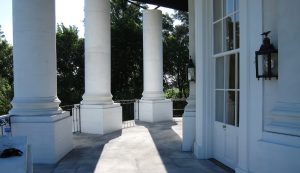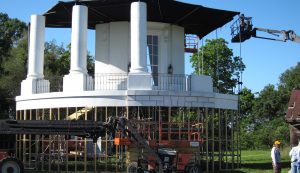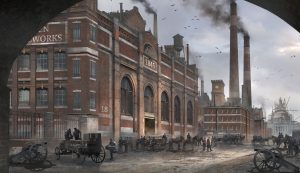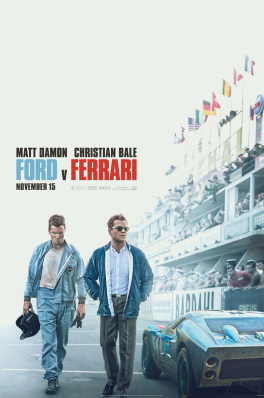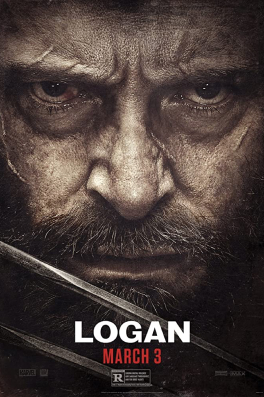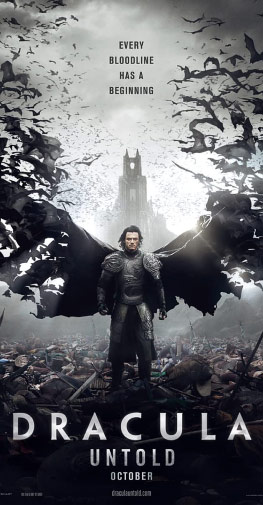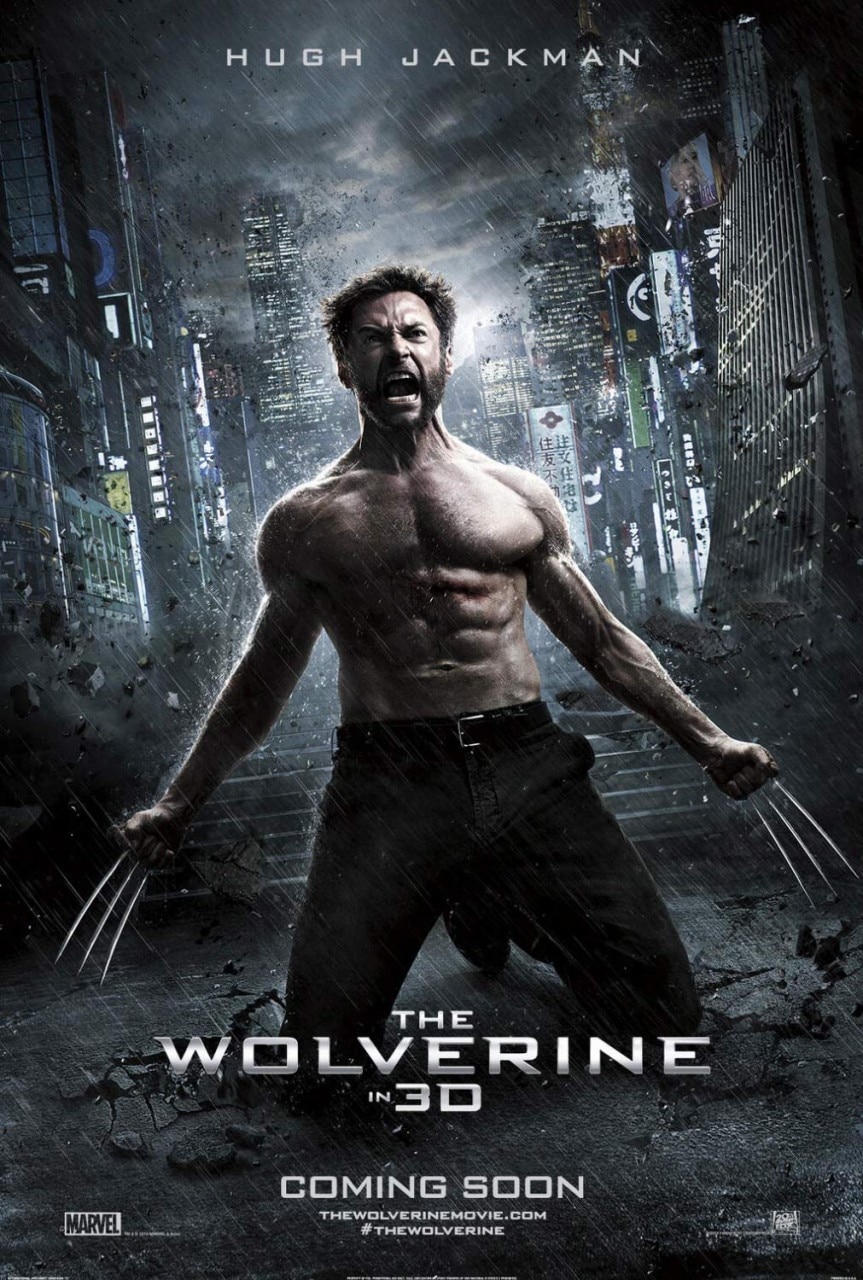Abraham Lincoln: Vampire Hunter
Director Timur Bekmambetov
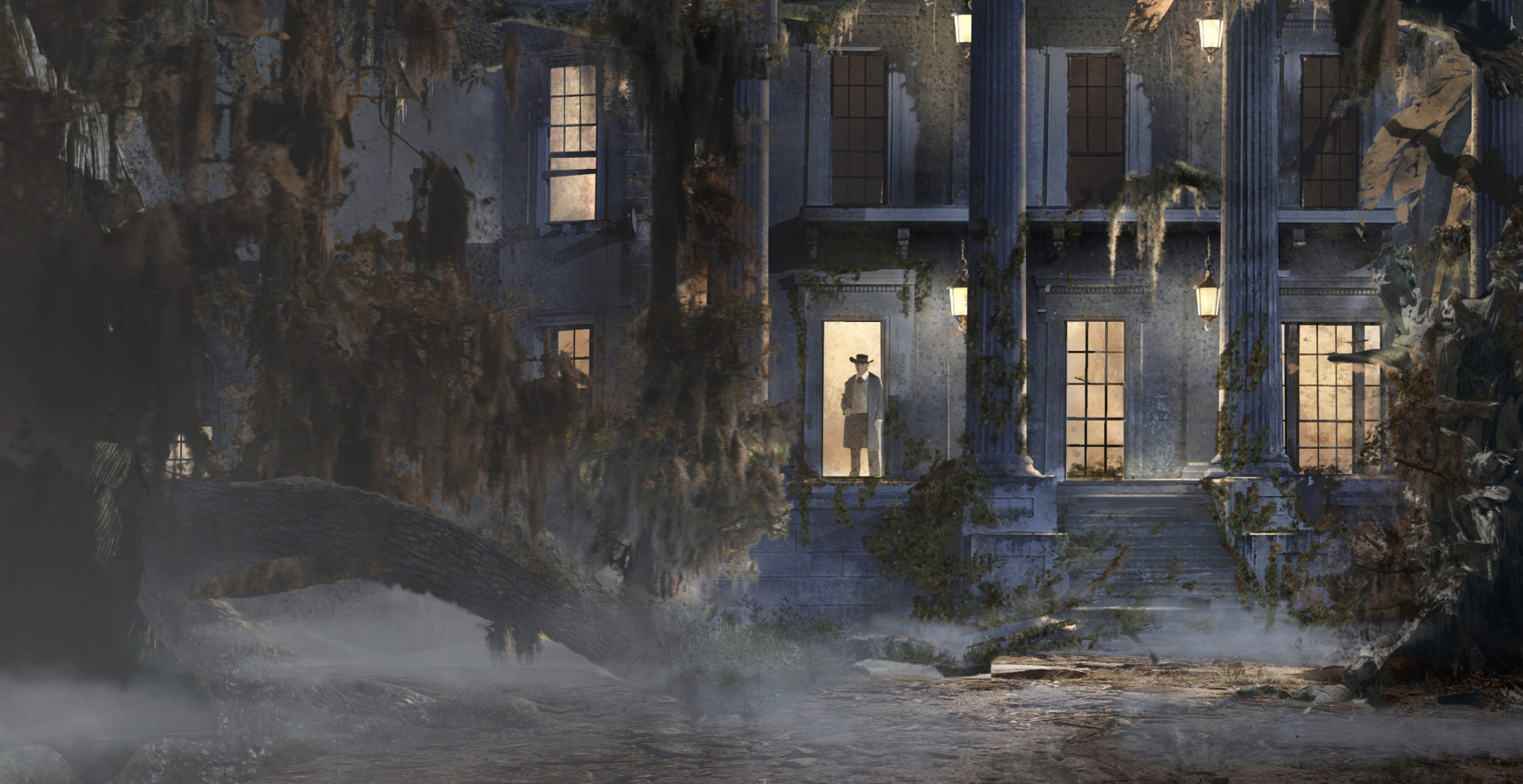
It sounded like the kind of movie I wanted to see. It felt like it could have the crazy energy of the films of my youth, which had a lot of weird mash-ups of horror movies.
Tim Burton
Index
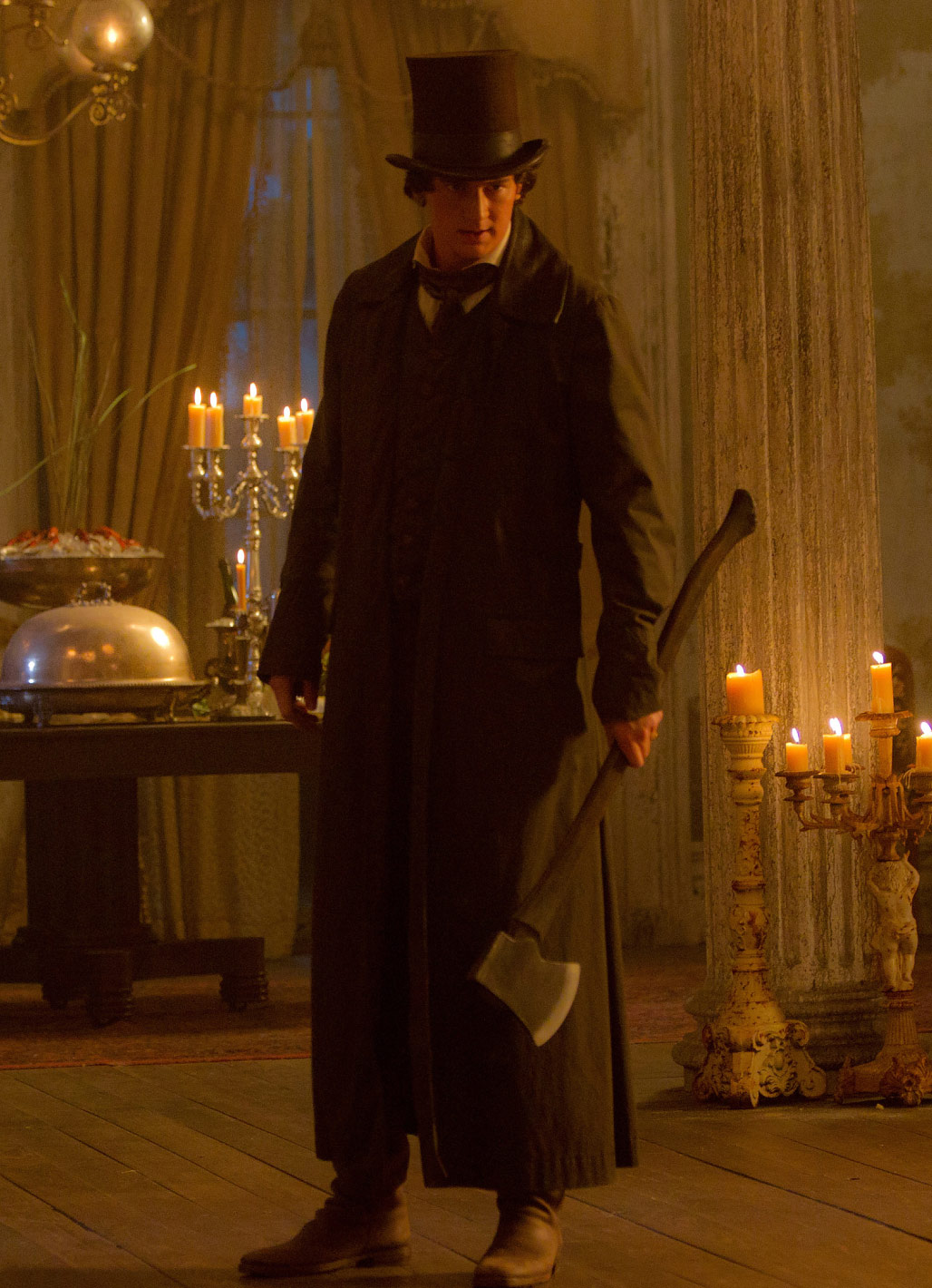
- Introduction
- Chapter 1: Lincoln’s Cabin
- Chapter 2: Hidden Gems in the French Quarter
- Chapter 3: J. Barts Shipping Co.
- Chapter 4: Springfield, Illinois
- Chapter 5: Down the Mississippi
- Chapter 6: Washington D.C.
- Chapter 7: Adam’s Plantation
- Chapter 8: The Props of AL:VH
- Chapter 9: Civil War!
- Chapter 10: The Silver Train
If you’re going to ask the audience to believe one thing — that it’s out of this world — then you have to create a world completely grounded and believable to draw them into the narrative.
FRANÇOIS AUDOUY
Read the full article
in perspective magazine
“Abraham Lincoln: Vampire Hunter” is based on the 2010 novel by Seth Graham-Smith— an epic mixing of history, fable and fantasy. The book was written in the style of a presidential biography, based on a “secret diary” Abraham Lincoln kept and updated throughout his life, and bequeathed to the author by an ancient vampire named Henry Sturges.
Evident from the title, the story reveals the secret history of our 16th President—that he was in fact also a hunter of vampires, living in a world where an underground society of vampires threatened to destroy America.
Lincoln’s arch begins as a young boy growing up in the American frontier of 1822, when he looses his mother to a vampire named Jack Barts. As a result, young Lincoln swears lifelong vengeance, and ten years later is discovered by Henry Sturges, who transforms him from a common man with revenge in his heart, to the most feared vampire hunter in the land.
Lincoln adopts his trusted ax as the tool of this dark trade, hiding it inside his signature black coat, and dispatches vampires, one by one, as instructed by his new mentor. Then when he’s elected president, Lincoln leads the charge into the Civil War as a means of averting a systematic takeover of America by power-hungry vampire hordes.

of patriots, traitors…and vampires


The film, directed by Timur Bekmambetov and produced by Tim Burton and Jim Lemley, came together quickly, when 20th Century Fox beat other studios for the rights to the film after being impressed by a meticulously prepared pitch which included the screenplay, pitch-viz, concept art, a budget, shooting schedule, and finally Tim Burton’s stamp of approval and confidence that it would result in success.
Almost immediately after Fox took on the project in October, I met with Timur and presented my visual ideas for the movie. My background as an illustrator and art director intrigued Timur, as he shared a similar career path to mine, starting his career as an art director in the Russian film industry.
Timur sparked to my drawings, and I later learned that quick sketches would be his communication medium of choice. During most meetings he would rely on a Sharpie and a notepad to play out ideas that were being discussed.
We often found ourselves passing quick cartoons back and forth across the table. If an idea worked on a Post-It, it was often worth pursuing.
It was during early conversations that Timur and I agreed the look of the film would be grounded in a convincing reality. We knew we were already asking the audience to take a giant leap of faith with the conceit behind this story, and we didn’t want an overt stylization to distract from the weight of the narrative.
From the get-go, it was also critically important that the film remain loyal to the character of Lincoln, as the story was so tightly interwoven with historical facts. We wanted the film to not only be an entertaining genre film, but also be grounded on a firm foundation of historical truth.
I set for myself the lofty goal of somehow connecting with the spirit of Lincoln, and remaining true to his incredible history. To this end, one of my first tasks was to become a Lincoln expert in short order.
Seth’s novel was a fantastic point of departure as it provided so much detail within the story, but I craved to know more, so I absorbed myself in every historic website and text I could find, and next, set off to find some experts.
Surprisingly, I discovered we had the unbridled support from the Lincoln Presidential Library & Museum in Springfield, Illinois, and also the Library of Congress in Washington DC. Both were completely on board with what we were trying to do with the film, giving me an invaluable hot line to the world’s greatest Lincoln scholars.

Seth Grahame-Smith

© 20th Century Studios
Chapter1
Location
Lincoln’s
Cabin

© 20th Century Studios
A pastoral setting on the North shore of Lake Pontchartrain provided the right look, but also presented challenges of restrictive muddy access. Even so, we managed to assemble the cabin we had pre-built in the construction shop. Days of hand-aging were required to split and age the faux-cedar logs and provide character.
The shooting schedule started with the most iconic of places: the Lincoln cabin. The script called for a remote homestead surrounded by miles of forest that would serve as a familiar, albeit foreboding, playground for 10-year old Abraham and his friends.
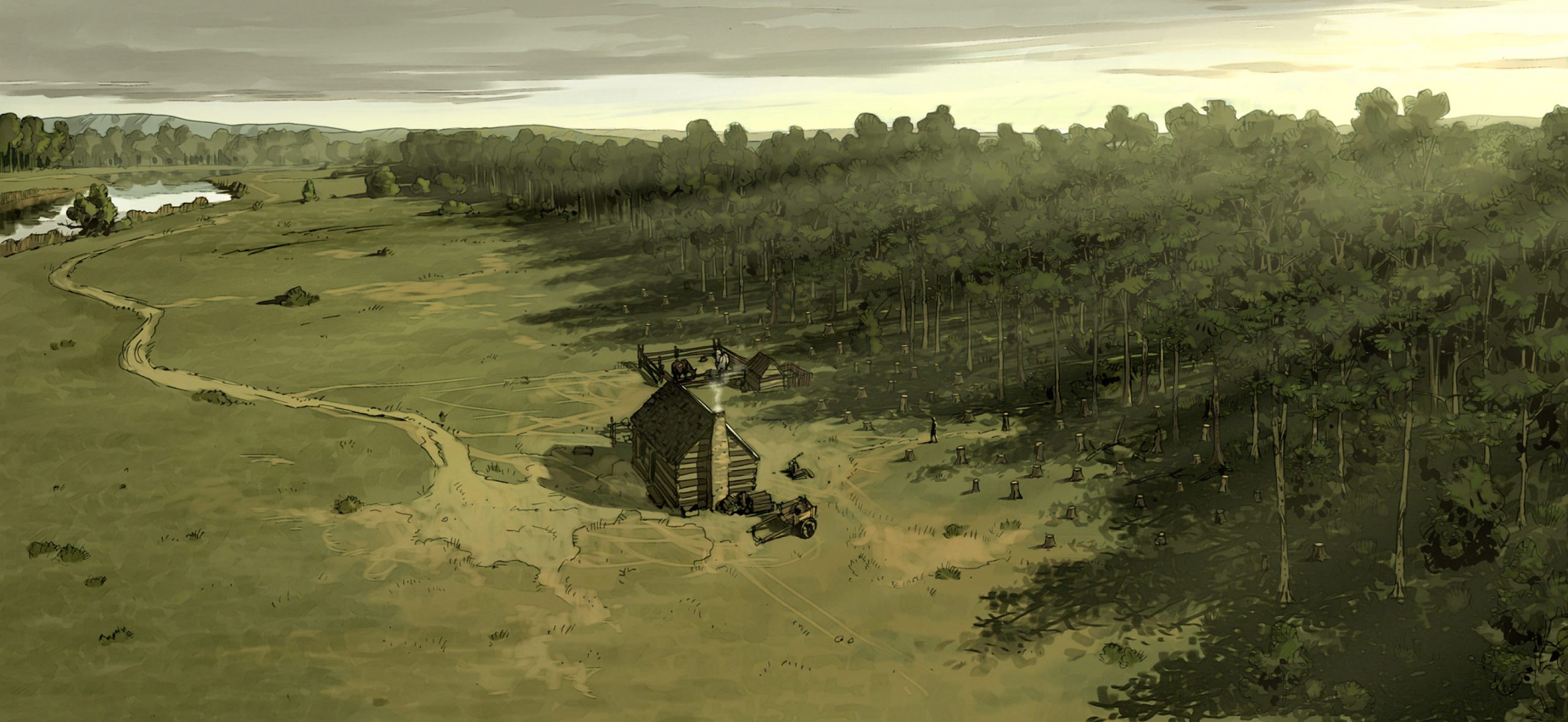
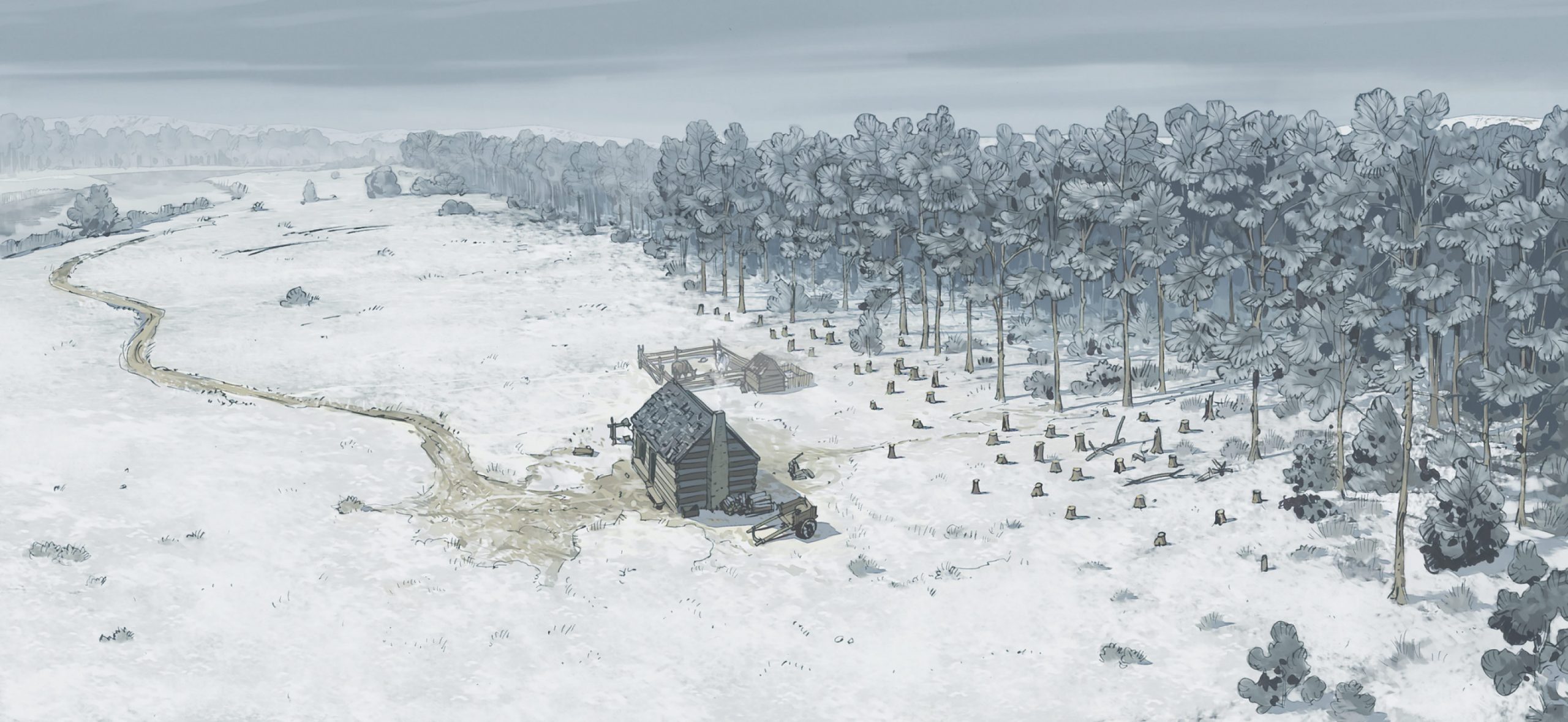
RODOLFO DAMAGGIO
Again, research proved to be invaluable in building the cabin setting. The Lincoln family actually lived in five different cabins, but there were no records of their exact architecture, only reconstructions based on accounts and descriptions.
Dozens of cut tree trunks bordering the edge of the forest told the story of the cabin, built by hand from the surrounding resources.

© 20th Century Studios

© 20th Century Studios


© 20th Century Studios
To add realism, we detailed the farm with a livestock pen, a chicken coop, a winter vegetable garden, as well as a working smoke house. As we opened the set at dawn on the first day of shooting, my Supervisor Art Director Beat Frutiger had aromatic smoke from pork bellies wafting through the site.
“History prefers legends to men. It prefers nobility to brutality, soaring speeches to quiet deeds. History remembers the battle, but forgets the blood.”
Benjamin Walker as
Abraham Lincoln
Francois’ enthusiasm was incredible and he was willing to take risks. It was not a big budget movie, but it was a huge undertaking. The project was risky, challenging, but he never made a mistake. He is really brave, and that helped us enormously. What he did was truly unbelievable.
Timur Bekmambetov
Chapter2
location
Hidden Gems in the
French Quarter
The company moved to the narrow streets of New Orleans’ famous French Quarter for Henry Sturgis’ house. We had found an ideal location — a well-preserved gorgeous Greek revival manor from 1841.
The house featured cypress floors that had never been refinished. Ornamental plaster moldings and medallions were all original and richly detailed. But the entire two-story interior had to be repainted as most walls had been ruined by gaudy faux finishes. Only one room retained original Venetian-style plaster, and provided a cue to the painters to match the historic and rich texture.

© 20th Century Studios

© 20th Century Studios
The challenge was to evoke decades of back-story for the character of Henry: A 200-year old immortal vampire, a bohemian world-traveler, scholar and collector of curiosities. We knew the dressing had to be just right, as Henry was going to be introduced to the audience from Lincoln’s point of view as he explored the house.
Two entire floors of the property, courtyard and rear slave quarters were a massive dress for Set Decorator Cheryl Carasik. The set needed to be a completely immersive world as the camera would eventual wander through every room.

© 20th Century Studios

© 20th Century Studios
The French Quarter offered up a wealth of locations for the film. We created a St. Louis “prostitute alley,” built alongside the walls of some original decaying slave quarters.
For a Louisville Pub we took over nearby Lafitte’s Blacksmith Shop, built around 1761, reported by some to still be haunted by its pirate patrons. In fact, faded pirate graffiti was pointed out to me behind the bar.
A period-appropriate pharmacy museum in the French Quarter was too good of a resource to pass up, and I convinced Timur to restage scripted action in this recreation of a 1860s apothecary shop. It was a marvelous place, filled with thousands of wonderful glass bottles, vials, and curiosities.
After a massive effort of removing every bottle, light fixture, jukebox, poster, chair and AC unit, Cheryl moved in with her dressing, dirted over the intersection outside, and added layer upon layer of texture and detail.
Chapter3
Location
J. Barts
Shipping Co.

© 20th Century Studios
Near the North shore of Lake Pontchartrain we built the set of Barts Shipping Co. — a sprawling warehouse structure and dock — from the ground up on a sleepy tree-rimmed bayou.
Initially, the site seemed perfect. Except for the problem with the alligators, including one particularly stubborn female that eventually birthed five little snappers in the woods a few hundred feet from the set.
Another surprise came when unseasonably intense storms pushed the waters of Lake Pontchartrain up into the arm of our bayou, raising the water level about 18 inches, while our dock was designed so the water level would stay put.

© 20th Century Studios

© 20th Century Studios
Overall, the site worked beautifully. Barts’ world was another set where we could shoot unrestrained in all directions, providing a sense of immersive realism.
Chapter4
Location
Springfield,
Illinois
To create our version of downtown Springfield, I first worked with Illustrator Manuel Plank-Jorge who painted over a Google Earth view of the present-day city, and referred to birds-eye drawings from the period depicting the density and style of buildings.
For the build, we took over a busy block of Church Street in the Warehouse District for two months. One side of the block was completely convincing for the period, however the other side was about 60 years out of time.
We solved this by cladding over windows, building seven storefronts and installing 500 feet of sculpted fascia and cornice to the top of the most historically-offensive buildings.


© 20th Century Studios
© 20th Century Studios

© 20th Century Studios

© 20th Century Studios
We also built the interiors of the general store belonging to Lincoln’s real-life friend Joshua Speed, as well as Lincoln’s first apartment, found in the space on the floor above the store.
The store itself was a 360-degree world of very period-specific products and color palette, with graphics designed by Graphic Designer Zach Fannin and others sourced by Cheryl’s graphic librarian, shopper and miracle-worker, Wendy Weaver.
Lincoln’s small studio apartment was inspired by the under-construction space we discovered above this location. Timur and I decided it would be fun if Lincoln’s room was a makeshift space that was under construction—a work in progress like Lincoln’s life itself. The cedar lath walls and unfinished quality of the space created a surprising context for Lincoln’s new life.
To tell the story of Lincoln’s courtship to his future First Lady, we chose the bucolic setting of Audubon Park. A spot beneath a 200-year-old oak tree and adjacent sleepy stream was augmented with thousands of flowering bulbs, while a nearby pedestrian bridge was blanketed with silk ivy.


© 20th Century Studios
“We wanted this to not only be an entertaining genre film, but also be grounded in a firm foundation of historical truth.”
François Audouy
Gallery
Chapter5
Location
Down the
Mississippi
As a young adult, Lincoln and a friend travel down the Mississippi River to New Orleans on a flatboat to sell a number of goods.
In a deleted scene from the script, Lincoln’s life is changed forever after he witnesses a slave auction in New Orleans. In the book, Lincoln follows a slave buyer and his new slaves back to their plantation and discovers to his horror that the buyer is a vampire; the slaves are to be used not for labor but for food.

© 20th Century Studios
Beat Frutiger
To recreate Lincoln’s journey down the Mississippi, Property Master Guillaume DeLouche worked with the construction department to build a full-size 35-foot flatboat, mostly out of solid cedar.
The boat was outfitted with twin electric motors and piloted down the Tchefuncte River, an un-dammed waterway not far from the mighty Mississippi. Cheryl and Guillaume created a cargo of goods appropriate for the time.

© 20th Century Studios
Chapter6
Locations & Stage
Building
Washington D.C.

In a field adjacent to Whitney Plantation, we erected the exterior of the South Portico of the White House, building from original plans provided by the exhaustive digital archive in the Historical American Buildings Survey.
This set was a little extra something we hadn’t budgeted, but after carefully visualizing the required scenery with Timur and a 3D model, we managed to find resources to build the minimal amount of structure required for the scene.
Gallery
“Some men are just too interesting to die.”
Dominic Cooper as Henry Sturges
The White House interior was shot inside historic Gallier Hall, which was the former city hall built in 1845.
For the White House dining room, I created faux wainscoting using lightweight foam molding which was double-stick taped to the walls as no nails were allowed in the historic structure. Above this, the painters installed reproduction Zuber wallpaper, which we assembled and up-rezed in Photoshop from hundreds of photographs I took from a room in the Old Governors Mansion in Baton Rouge. The Zuber wallpaper in Baton Rouge matched the wallpaper in the Diplomatic Reception Room of the White House, first printed in 1834.
Finally, we created a custom wall stencil for the Executive Office which was hand-painted in gold paint, and design to set off the wall-to-wall Victorian carpeting sourced by Cheryl.
The Executive Office featured reproductions of the actual old paintings decorating Lincoln’s White House. A small wooden Lego-like toy castle lies at the feet of Lincoln’s desk, where his son Willie would play.


© 20th Century Studios



© 20th Century Studios
The interior of the Illinois Old State Capitol was also recreated in Gallier Hall, using the original architectural plans of the Statehouse Chamber as inspiration.

An antique ink drawing of the Chambers of the House of Representatives from around 1860 was re-lit and sweetened in Photoshop, and served as a basis for a matte painting in the film. A tiny part of the U.S. Capital House of Representatives chamber was built on stage, and the decorative Victorian-era desks and original moldings were reproduced from research.

© 20th Century Studios

© 20th Century Studios
François Audouy has an unexpected approach to the historical aspects. He uses both computer effects and actual locations to blend the real and the artificial in ways that could only have been previously imagined.
Michael Cieply
the New York Times
Chapter7
Locations & Stage
A Plantation
in Decay
Next, it was time to head to the western boundary of New Orleans 60-mile shooting zone to the grounds of two sister plantations along River Road which hugs the banks of the Mississippi.
At Evergreen Plantation, we shot the rows of 22 original slave quarters, which remain untouched in silent witness to history, beneath a tunnel of magnificent ancient oaks, with miles of sugarcane fields beyond. Shooting at the site of unspeakable sins and tragedy was a haunting experience for the crew.
A quarter mile from the slave quarters, we built the window to Adam’s plantation, the interior of which would be built on stage.
It was indeed a mysterious place. One day our painters were surprised by a five-foot python falling onto the set from the trees above. A snake not indigenous to the region and an unpleasant surprise for the crew.

© 20th Century Studios

© 20th Century Studios

© 20th Century Studios

Detroit Institute of Arts
Adam’s plantation would be home to our film’s biggest villain—the most ancient of vampires and the most evil. For the design of this mansion, I drew inspiration from the Belle Grove Plantation which was a grand and elaborate Italianate-style mansion, and one of the largest mansions ever built in the South.
Sadly, the property was destroyed by fire in 1952. I was intrigued by the idea of bringing this mansion back from the dead, and became obsessed with the details of its architecture, tracking down pages of architectural details and even acquiring original molds for the plaster capitols.
For the plantation interior, I imagined a place that was humid and sultry, with sweating walls and slowly decaying plaster—a place whose decomposition was somehow being accelerated by the evil living under its roof. The exterior would be a matte painting showing the giant oaks wrapping their limbs through the porticos in a malevolent embrace.
Above the 16-foot walls would be CGI set extension and a detailed fresco-covered coved ceiling, where vampires would spring from the camouflage of the fresco’s figures. Illustrator Rodolfo Dammaggio, working from photographic reference, painted the fresco in Photoshop.
We licensed all the artwork and tapestries on Adam’s walls and printed the pieces on our in-house printer on substrates that were then aged by our painters. Our scenic painters also painted a decaying mural behind the ballroom’s serpentine staircase.

© 20th Century Studios

© 20th Century Studios
Chapter8
Specialty Builds
The Props
of AL:VH

© 20th Century Studios
The screenplay presented the enormous challenge of requiring hundreds of hand-props and weapons from the 18th and 19th centuries. It featured all major events of Lincoln’s life, covering six decades, the Civil War and also flashbacks showing the 18th Century back-story of Henry Sturgis.
Guillaume’s strategy for the movie was inspired and centered on creating a prop fabrication shop on location in New Orleans. He knew we simply didn’t have the budget to ship everything from Los Angeles and rent them for the duration of the five-month shoot. As a result of this constraint, we ended up having complete control of the look and historic accuracy of the props, and also saved millions in rental fees.
“We took everyday objects of that era and gave them a twist. Everyone is familiar with muskets, bayonets and axes, but nobody had thought of turning them into a single weapon.”
Tim Burton

© 20th Century Studios

© 20th Century Studios
Guillaume hired tremendous craftsmen for his team. These included Frank House, a Kentucky firearms-maker whose custom antique rifles are works-of-art with a five-year waiting list, as well as Frank’s wife Lally, an artist specializing in creating embroidered leatherworks inspired by traditional Nation American designs using naturally dyed porcupine quills and rare albino moose hair collected by the Alaskan Inuit.

© 20th Century Studios
Frank was charged with building the key prop in the film—Lincoln’s trusty ax—that had the unique ability to transform into a gun when required. Amazingly, the prop was built for real, and functioned practically.
As the assembled design team launched into action, scouting for the dozens of locations began in earnest. New Orleans provided tremendous value to our film as so many locations from the 18th and 19th centuries remain intact and in excellent condition.
In the rear slave quarters of the location used for the Henry Sturges home, we built out a weapons workshop, which was a sort of “bat cave” for Henry to offer up a plethora of potential weapons to his new student. Of course, Lincoln chooses the familiar axe he sees embedded in a stump in the courtyard.

Jon Graubarth
© 20th Century Studios
Chapter9
Location
Civil War
and Gettysburg
To recreat the Civil War and Gettysburg, we partnered with local Civil War re-enactors to not only restage battles, but also erect both Union and Confederate campsites.
The re-enactors all brought their own gear, which was a great addition to the tents provided by our decorating and props departments. This was augmented by Guillaume’s mountain of props, including cannons, munitions, and tents.
When it was time for Lincoln’s Gettysburg Address, the weather Gods provided a dramatic cumulus backdrop. A chill shot up my spine as Benjamin Walker spoke the famous soliloquy across the field of extras. The illusion was uncanny.

© 20th Century Studios

© 20th Century Studios

© 20th Century Studios

© 20th Century Studios
“Timur showed me some pictures from the Civil War that actually were in 3D. It was almost the first use of 3D photography.”
Tim Burton
Chapter10
Stage Build
Lincoln’s Silver
Train
Our final stage challenge was constructing a magnificent train locomotive and cars that would be mounted on custom motion bases to simulate the motion and pitch of a collapsing trestle bridge. To create the engine and box cars, we followed engineering plans found in a train builder’s encyclopedia from 1888.
It was calculated that it would be more efficient to build Lincoln’s Silver Train on stage, with a motion base that was built to angle the train at 35˚, which simulated the angle of a crumbling trestle bridge. Art Director A. Todd Holland came aboard to oversee and manage the finicky build of the locomotive, tender and boxcars.
A detailed 3D model of the Silver Train by Set Designer Richard Reynolds was an efficient time-saver for construction drawings.
To create the locomotive’s headlamp, I had the idea of housing a classic Mole Richardson studio light into a steel enclosure.


© 20th Century Studios

© 20th Century Studios


© 20th Century Studios

© 20th Century Studios
Concept illustrator Rodolfo Damaggio helped determine initial scale and lighting of the burning trestle bridge and train by modeling and lighting the bridge using 3D modeling software. I sourced original blueprints from the 1800s to design the trestle bridge.

With the diligent support and tireless efforts of my hard working team, the production evolved and concluded as one infused with superb historical detail for a dynamic backdrop that truly helped bring this incredible story to life.
Art Department Credits
- Art Director
- Beat Frutiger
- Assistant Art Directors
- Mara LaPere-Schloop
- Patricio Farrell
- A. Todd Holland
- Set Decorator
- Cheryl Carasik
- Researcher
- Branden Tucker
- Concept Illustrators
- Rodolfo Damaggio
- Manuel Plank-Jorge
- Jeff Julian
- Fabian Lacey
- Set Designers
- Sarah Forrest
- Molly Mikula
- Adele Plauche
- Trinh Vu
- Storyboard Artist
- Indar Dzhendubaev
- Graphic Designer
- Zach Fannin

